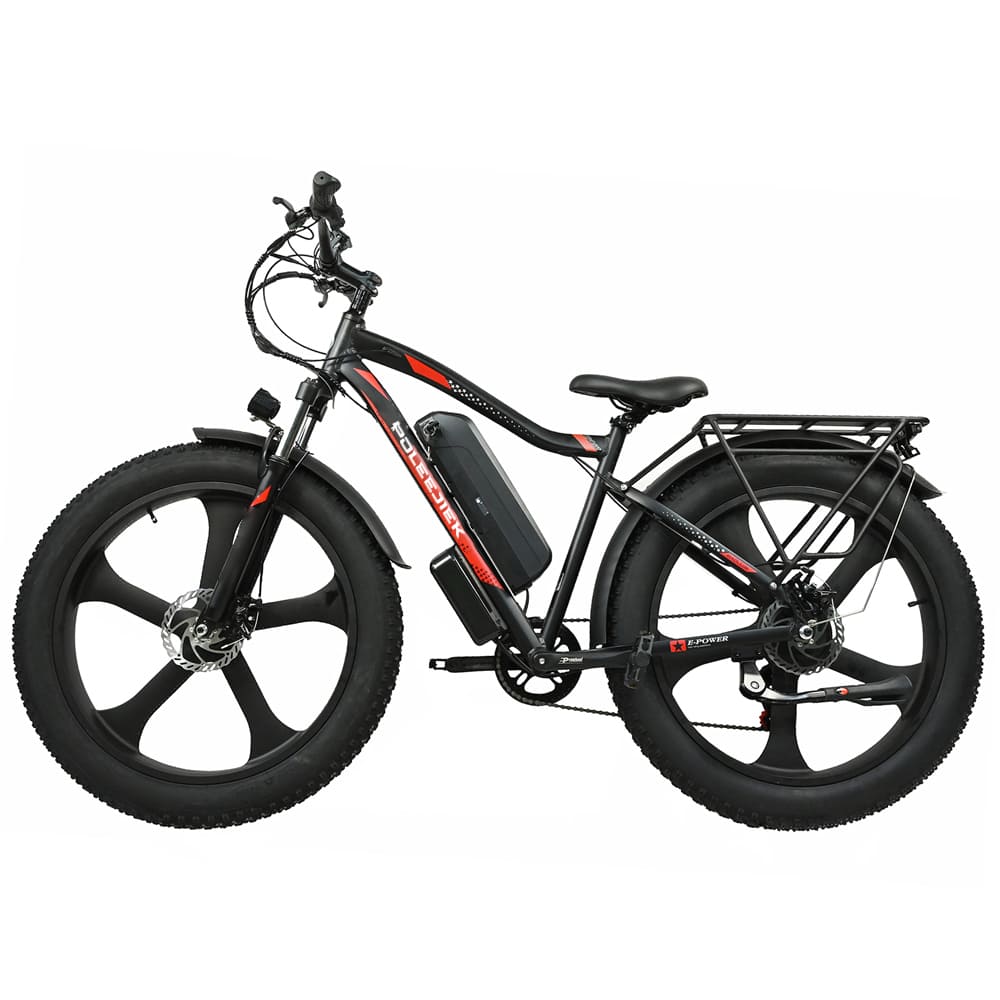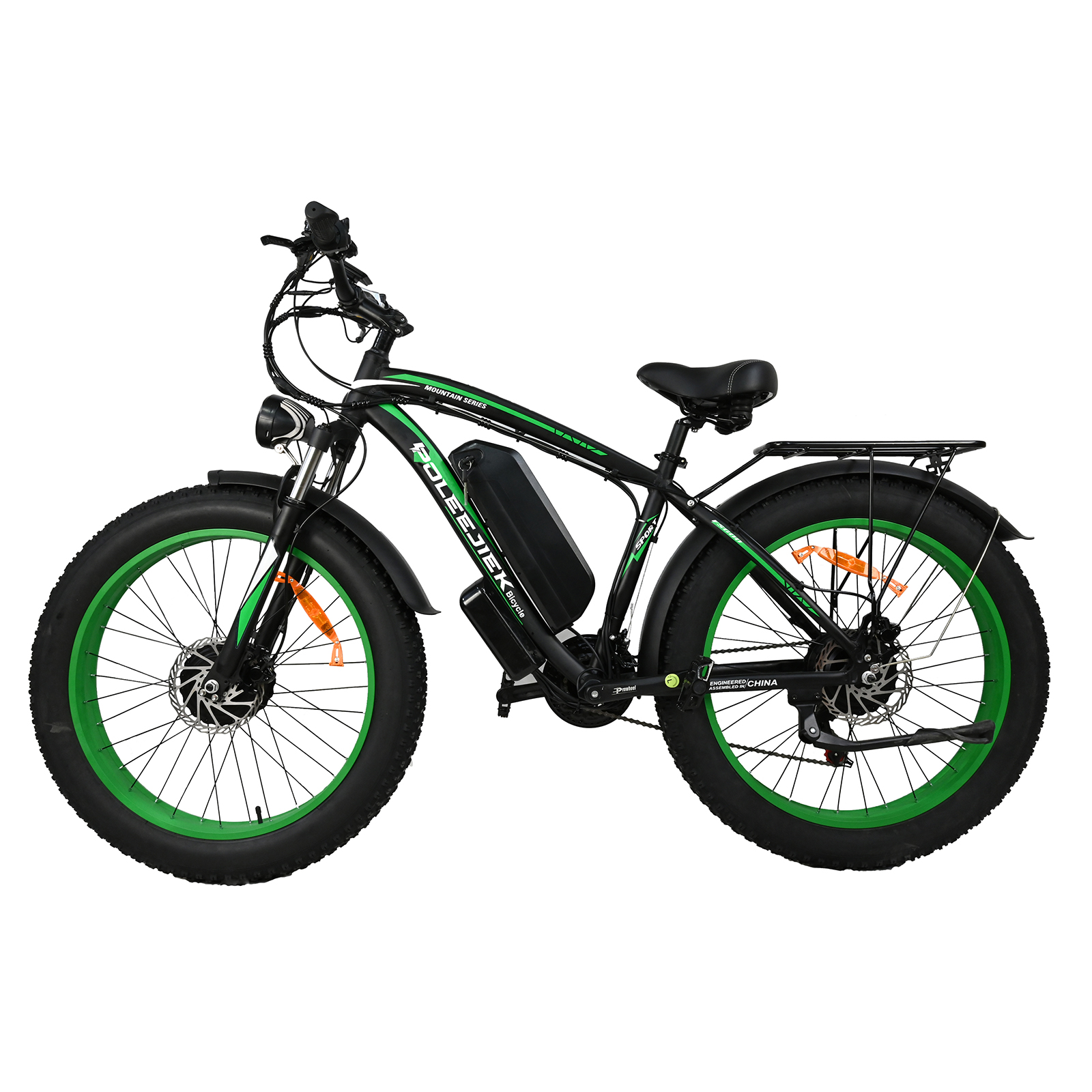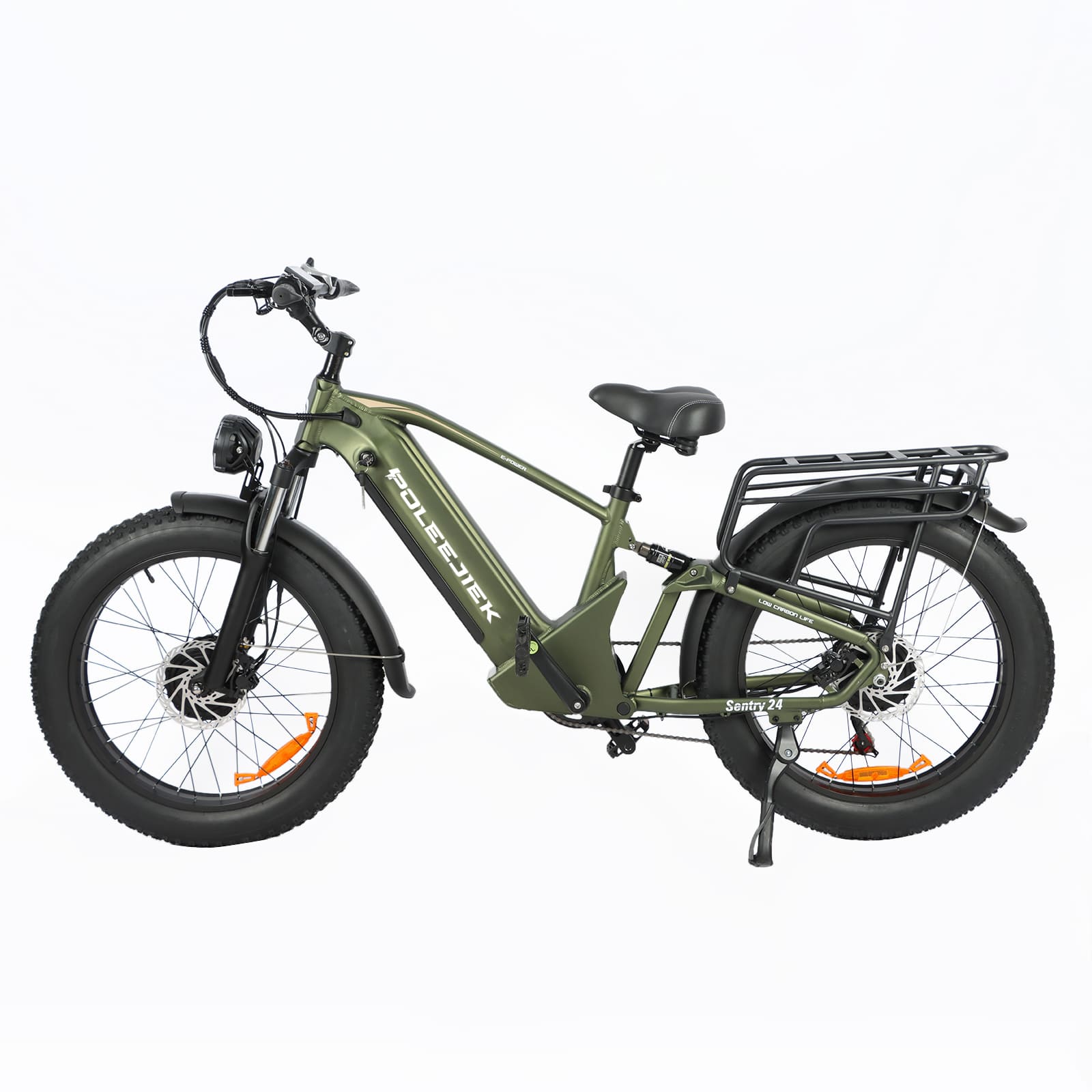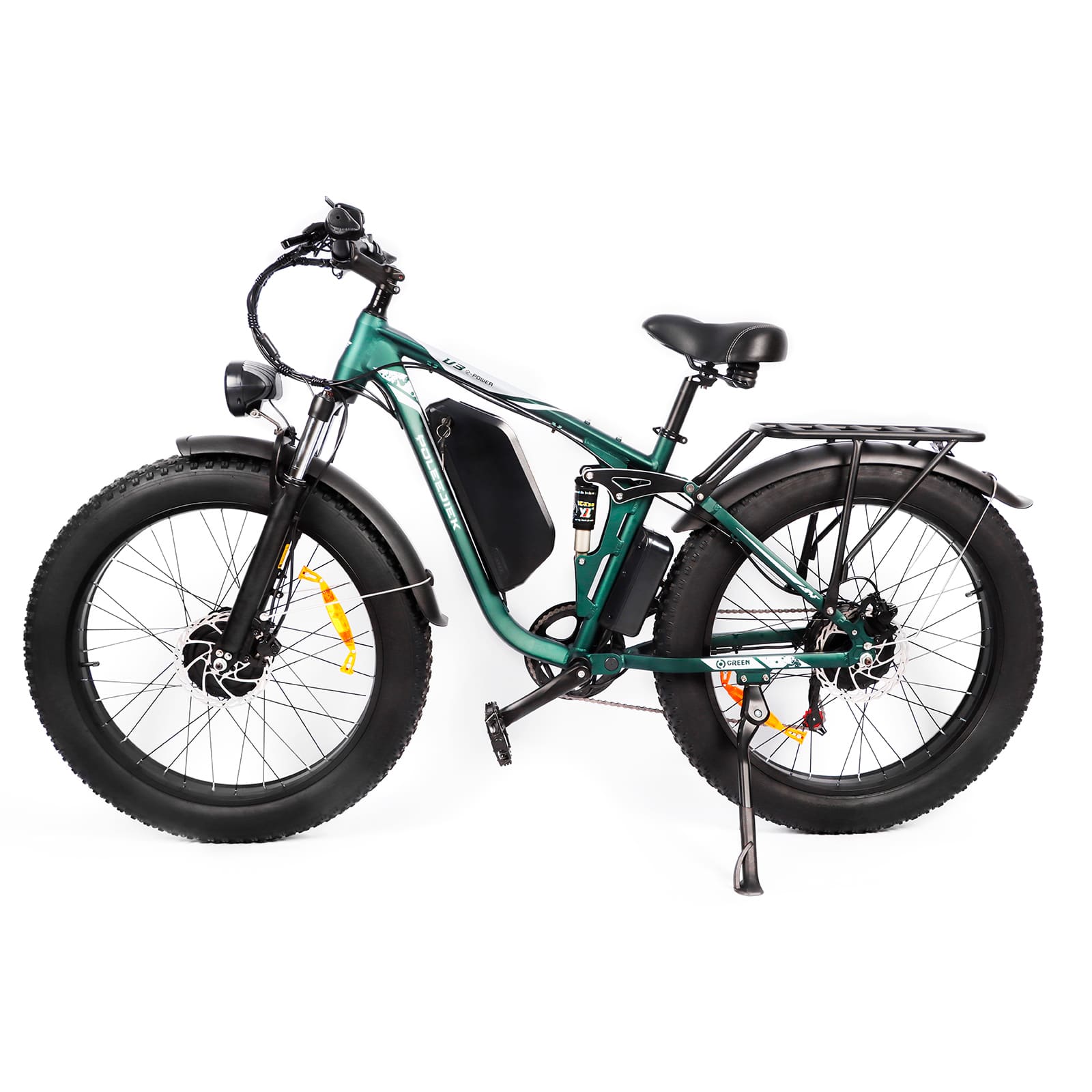Boost E-Bike Fleet ROI with IoT: A B2B Guide

It’s 10:00 PM. Do you know where all your fleet assets are? What is their battery health? Are your riders safe? If you can't answer these questions in real-time, you're not just managing a fleet; you're managing a liability. In the modern B2B landscape, unconnected assets are invisible assets, and invisibility costs money. This is where the Internet of Things (IoT) transforms the e-bike from a simple vehicle into a 24/7, data-streaming business tool.
Key Takeaways
-
Asset Security: IoT provides real-time GPS tracking, geofencing, and remote locking to prevent the theft of high-value assets. This is critical for rental fleets of models like an electric dirt bike or fat tire ebike—explore our theft-resistant electric dirt bike lineup and fat tire ebike guide for fleet-ready options.
-
Operational Efficiency: You can monitor the live "State of Charge" (SoC) for every bike in your fleet. This enables proactive battery-swapping logistics and optimizes deployment using "heat map" data—learn how our cargo e-bikes integrate battery monitoring for delivery fleets.
-
Predictive Maintenance: IoT can read Diagnostic Trouble Codes (DTCs) directly from the motor controller. This allows you to fix problems before they strand a rider or cause a catastrophic failure, saving thousands in repairs—our mid-drive ebike guide explains how motor diagnostics work for commercial fleets.
-
Rider Safety: A built-in accelerometer can detect a crash or fall. The system can automatically alert the fleet manager with the rider's precise location, which is vital for managing risk on remote trails—ideal for our off-road electric mountain bikes.
-
B2B Integration: A complete IoT solution includes hardware (TCU), connectivity (SIM), a software platform (Dashboard), and an API (Application Programming Interface) to connect fleet data to your existing booking or ticketing systems—POLEEJIEK’s B2B OEM solutions support seamless API integration.
Beyond the Ride: How IoT is Revolutionizing E-Bike Fleet Management

So, what is a "smart" e-bike? In simple terms, IoT connects your e-bike to the internet. A small, hidden telematics unit—equipped with GPS, sensors, and a cellular connection—is integrated directly into the bike's electronics. This unit, which relies on Telematics technology, constantly communicates with a central cloud platform. Your fleet is no longer a collection of isolated assets. It’s a dynamic, live data center—perfect for managing commercial adult electric bikes of all types.
For B2B operators, fleet managers, and OEM/ODM partners, this isn't a gimmick. It is the new foundation for:
-
Asset Security: Knowing where your high-value bikes are at all times—critical for premium retro ebikes and heavy-duty cargo e-bikes.
-
Operational Efficiency: Using data to service bikes and swap batteries proactively, not reactively—our ebike battery guide complements IoT battery monitoring.
-
Predictive Maintenance: Fixing problems before they strand a rider or cause a catastrophic failure—see how this works for folding electric bikes in our maintenance resources.
This technology is fundamentally changing the business model for all types of adult electric bikes, turning them from simple transport into intelligent commercial equipment—explore our 2025 B2B electric bike guide for IoT-ready models.
Core Function 1: Asset Security & Theft Prevention
The Pain Point
An e-bike is a high-value, high-risk asset. For rental fleets in tourist areas, delivery services in dense cities, or adventure companies on remote trails, theft is a primary source of revenue loss. A single stolen bike can wipe out the profit from several others—this risk is especially high for high-performance electric dirt bikes and fat tire electric bikes.
The IoT Solution
Smart e-bikes offer a multi-layered defense system that makes theft both difficult for the thief and trackable for the operator—learn how to pair this with our cargo e-bike security features for delivery fleets.
|
Security Feature |
How It Works |
|---|---|
|
Real-Time GPS Tracking |
A fleet manager can see the exact location of every bike on a single dashboard. This is persistent, live-location data designed for commercial asset recovery, powered by GNSS (Global Navigation Satellite System) technology for high accuracy—ideal for monitoring kids' electric bikes and retro ebikes alike. |
|
Geofencing |
This is a "virtual fence." You draw a permitted operational zone on your map. If a bike crosses this boundary, the system instantly sends an alert to the manager—great for limiting off-road electric bikes to designated trails. |
|
Remote Locking & Immobilization |
If a bike is stolen, a manager can send a command to remotely "brick" the bike. This command tells the IoT unit to cut power to the motor controller, rendering the electric assistance useless—critical for protecting high-value cargo e-bikes. |
Example: Imagine an electric dirt bike adult rental fleet operating on remote trails. GPS and geofencing are the only ways to ensure these high-performance, high-value bikes don't "go missing." The ROI is simple: the cost of one lost fat tire ebike can often pay for the IoT hardware on ten others for a full year—explore our adult electric dirt bike guide for fleet options.
Core Function 2: Maximizing Operational Efficiency
The Pain Point
"Guesswork" management. How many bikes are low on power? Where should your battery-swap team go first? Are your bikes in the right place to meet customer demand? This inefficiency hits delivery fleets and urban rental bikes hardest.
The IoT Solution
IoT replaces guesswork with data-driven decisions, turning your operation from reactive to proactive—pair this with our battery management tips for even better results.
-
Real-Time Battery Monitoring: Your dashboard shows a live "State of Charge" (SoC) for every bike in the fleet. Your operations team can see at a glance which bikes are at 100%, 50%, or 20%. This allows for intelligent battery-swapping logistics—perfect for cargo e-bikes that run all day. Instead of waiting for a customer to report a dead battery, your team is automatically dispatched to the bikes that need service.
-
Asset Utilization Analysis: The platform logs every trip, every minute of operation, and every hour of idle time. By analyzing this data, you can generate "heat maps" of demand—ideal for rebalancing folding electric bikes in busy urban areas. This data is business intelligence that allows you to optimize rebalancing, ensuring your bikes are where your customers are.
Example: For a beach rental business, this means ensuring your fat tire electric bike fleet is charged and ready before the 10:00 AM tourist rush, maximizing your revenue during peak sunlight hours—see our fat tire ebike guide for rental-ready models.
Core Function 3: Predictive Maintenance & Rider Safety
The Pain Point
A bike fails mid-ride. For a tourist, it's a negative review and a customer service nightmare. For a delivery rider, it's lost income. For an adventure rider, it could be a serious safety hazard. Reactive maintenance is always more expensive than proactive maintenance—this is especially true for off-road electric mountain bikes and heavy-duty cargo bikes.
The IoT Solution
The IoT unit doesn't just read GPS data; it "listens" to the bike's core components—learn how this integrates with our mid-drive motor diagnostics.
Remote Diagnostics & DTCs
The IoT module can tap into the bike's CAN bus or UART communications. This means it can read the same Diagnostic Trouble Codes (DTCs) that a mechanic would—critical for maintaining commercial electric bikes at scale.
-
Is the motor controller overheating?
-
Is a brake sensor failing?
-
Is the battery experiencing voltage sag under load?
These error codes are sent from the bike to the cloud in real-time. Your maintenance team gets an alert: "Bike #105 reports Motor Hall Sensor Fault." They can pull that bike from service and fix the minor sensor issue before it becomes a catastrophic motor failure, saving thousands—this is a game-changer for large B2B fleets.
Collision Detection
Using a built-in 6-axis accelerometer and gyroscope, the IoT unit can detect a sudden, hard impact or a non-standard tilt angle (i.e., the bike has fallen). When this is detected, the platform can trigger an automated safety protocol—essential for remote trail electric bikes:
-
An immediate alert is sent to the fleet manager with the bike's precise location.
-
The system can attempt to contact the rider.
-
If there is no response, the manager can dispatch emergency services or a support team directly to the rider's location.
Example: This safety feature is invaluable. For businesses renting the best electric dirt bike models for off-road trails, this collision detection system is a critical tool for managing rider safety. A rider exploring a remote dirt bike electric trail is no longer alone—explore our adult electric dirt bike options with built-in safety features.
How to Integrate IoT: A Guide for OEM/ODM Partners
For B2B buyers and integrators, understanding how to implement IoT is as important as why. This isn't just one "box"; it's an ecosystem. When you're sourcing your next fleet, you must consider these four layers—POLEEJIEK’s OEM services support end-to-end IoT integration.
Layer 1: The Hardware (The TCU)
This is the "Telematics Control Unit" or "IoT box" itself. A robust, automotive-grade TCU should include:
-
GPS/GNSS Module: For high-precision location—critical for tracking cargo e-bikes in dense cities.
-
Cellular Modem: (e.g., 4G LTE-M, NB-IoT) for low-power, wide-area data transmission—ideal for folding electric bikes that move across urban areas.
-
Accelerometer/Gyro: For crash detection and tamper alerts—essential for off-road electric bikes.
-
Direct Controller Interface: The ability to connect via CAN bus or UART to read bike data and send commands (remote lock)—compatible with our mid-drive motor systems.
-
Internal Backup Battery: To ensure the device keeps tracking even if the main e-bike battery is removed—protects high-value assets like premium retro ebikes.
Layer 2: The Connectivity (The SIM)
The TCU needs a data plan. You need a global, M2M (Machine-to-Machine) IoT SIM provider. These SIMs are designed for low-data-usage devices and can operate on multiple cellular networks—POLEEJIEK’s B2B support includes SIM integration guidance.
Layer 3: The Platform (The Dashboard)
This is the software—the "command center" for your fleet. This platform must provide:
-
A live map of all assets—great for managing mixed fleets (cargo, folding, retro).
-
A management dashboard for battery health, utilization, and maintenance alerts—paired with our battery guide for optimal performance.
-
Tools for setting geofences and user permissions—ideal for limiting electric dirt bikes to safe trails.
-
A robust reporting and analytics engine—helps optimize delivery fleet routes and rental bike placement.
Layer 4: The API (The 'Glue')
For many integrators, this is the most critical layer. The API (Application Programming Interface) allows the IoT platform to "talk" to your existing business software—POLEEJIEK’s OEM solutions include custom API development for B2B partners.
Example: Want to connect your booking website to your bikes? The API lets your site send an "unlock" command when a customer pays. Want to sync maintenance alerts with your ticketing system? The API can auto-generate a work order when a bike reports a DTC—perfect for large rental fleets.
IoT in Action: B2B Case Studies
Case Study A: The Tourist Rental Fleet (Fat Tire Bikes)
-
Assets: Fat tire electric bikes deployed at beach kiosks, parks, and hotels—see our fat tire ebike guide for similar models.
-
Primary Goal: Maximize customer uptime, ensure safety, and simplify management.
-
Key IoT Features: Geofencing (to create "safe ride zones") and Battery Monitoring (to prevent a customer from renting an electric bike fat tire with 10% battery, avoiding bad reviews).
Case Study B: The Adventure & Off-Road Fleet (Electric Dirt Bikes)
-
Assets: High-performance electric dirt bike models for guided tours or track rentals—explore our adult electric dirt bike lineup.
-
Primary Goal: Rider safety, asset protection, and liability management.
-
Key IoT Features: Collision Detection is the number one priority. Remote Power Limiting (to set "beginner" modes for novice electric dirt bike for adults riders). And live GPS tracking for guide management.
Case Study C: The Last-Mile Delivery Fleet (Cargo E-Bikes)
-
Assets: A large fleet of adult electric bikes used for food or package delivery—our cargo e-bikes are built for this use case.
-
Primary Goal: Maximum uptime, operational efficiency, and rider accountability. As noted in a McKinsey report, last-mile logistics suffers from significant waste—IoT helps address this by minimizing downtime.
-
Key IoT Features: Predictive Maintenance (DTCs) is essential. Battery Swap Logistics and Rider Behavior Monitoring (to track harsh braking or speeding) are also key—see our cargo ebike case study for more.
Conclusion: You're Sourcing a Solution, Not Just a Bike
B2B procurement is evolving. The next generation of commercial e-bike fleets will be fully connected. IoT technology is the bridge that turns a capital-intensive asset into a smart, data-rich solution. It shifts your operations from "reactive" to "predictive," saving you money, protecting your investment, and enhancing rider safety—POLEEJIEK’s 2025 B2B fleet guide highlights IoT-ready models.
The next time you are in the market for an electric bike for sale to expand your fleet, don't just ask about motor specs and battery capacity—ask about IoT integration.
Ask: "Does it support IoT fleet management?"
POLEEJIEK is providing advanced, deeply-integrated IoT solutions for our B2B and OEM partners. We move beyond simply installing a third-party box; we integrate telematics directly into our controller and firmware for the most reliable data—learn more about our B2B services.
Contact our B2B solutions team today to discuss how we can build a smarter, safer, and more efficient future for your fat tire ebike, cargo, or commuter fleet—explore our contact page to get in touch.
FAQ
What is e-bike geofencing?
Geofencing is a "virtual fence" that a fleet manager draws on a map. If an e-bike with an IoT tracker crosses this boundary, the manager gets an instant alert. This helps prevent theft and ensures riders stay in safe, approved operational zones—ideal for off-road electric bikes and kids' electric bikes.
How does IoT help with e-bike battery management?
IoT allows for real-time battery monitoring of every bike in the fleet. Your dashboard shows the live "State of Charge" (SoC) for all assets. This lets you create efficient, proactive battery-swapping schedules instead of waiting for a battery to die—pair this with our battery care tips for longer battery life.
Can IoT prevent e-bike motor failure?
IoT enables predictive maintenance. The IoT unit can read Diagnostic Trouble Codes (DTCs) directly from the motor controller—often via the bike's CAN bus. This means you are alerted to small issues (like a sensor fault) before they can escalate into a major, expensive motor failure—critical for maintaining mid-drive electric bikes in commercial fleets.
What is a TCU in a smart e-bike?
-
TCU stands for "Telematics Control Unit."
-
It is the "brain" of the smart bike, containing the GPS, cellular modem (often supporting 4G LTE-M, NB-IoT), and sensors—compatible with all POLEEJIEK commercial electric bikes.
-
It should have an internal backup battery so it can keep tracking even if the main e-bike battery is removed—protects high-value assets like retro ebikes and cargo e-bikes.






